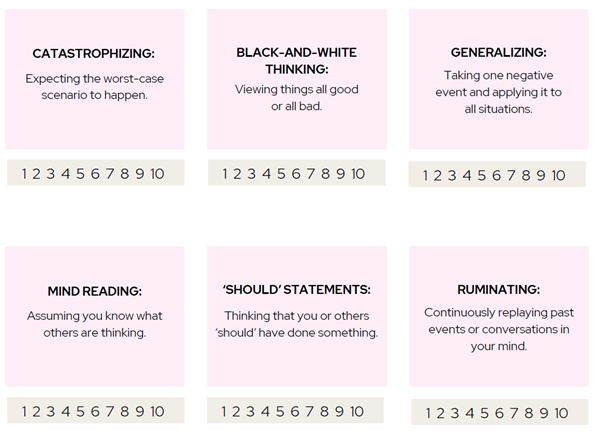
Photo by: pexels-sound-on-3761026
Do you find it hard to stop overthinking? Do you feel like your mind is running on a hamster wheel, constantly racing with thoughts you can’t seem to quiet? You lie awake at night, replaying conversations, wondering if you said the wrong thing. You agonize over every decision, doubting yourself even after you have made a choice. Overthinking can feel like you are drowning in your own mind, unable to catch a break from the noise.
It is exhausting, isn’t it? The constant second-guessing yourself, the replaying of “what if” scenarios, and the sinking feeling that no matter how hard you try, you can’t find peace. Overthinking doesn’t just drain your energy; it steals your joy, disrupts your sleep, and keeps you from fully enjoying the present moment.
If this resonates, you are not alone. But let me tell you this: it doesn’t have to control you. You can stop overthinking. You can break free from this internal battle, quiet your mind, and step into a life where clarity and calm replace chaos and doubt. I promise you that you can. I have, and I have helped countless clients do the same.
IMAGINE…
Waking up each morning with a clear mind, able to focus on what matters most without being weighed down by worry. Picture yourself making decisions confidently, without the loop of second-guessing. That is not just a dream, it is a reality that you can achieve through simple, actionable strategies. And today, I’m going to share some of these strategies to get you started, so you can experience this transformation.
Why Do We Overthink? What Happens in the Brain?
When the amygdala, the emotional center of your brain, senses a “threat,” it kicks into overdrive, flooding your body with stress hormones like cortisol. These hormones prepare you to react quickly, but they also suppress the prefrontal cortex, the part of your brain responsible for logical thinking and decision-making.
In other words, when stress hits, your brain flips into emotional overdrive and loses its ability to think clearly. Instead of solving the issue and moving on, your thoughts spiral into worst-case scenarios, playing out every possible way things could go wrong. The more you try to “think” your way out, the deeper you sink into overthinking; it’s like mental quicksand.
The more you overthink, the stronger the neural pathways that support that habit become. Your brain literally wires itself to make overthinking easier and more automatic. Every time you worry about whether your boss hated your presentation, you are strengthening that loop in your brain.
But don’t worry, you can rewire your brain to break free from this pattern. And that’s exactly what you are about to learn how to do!

Photo by Josh Riemer on Unsplash
Step 1: Recognize and Label Your Thoughts
The first step to stop overthinking is awareness. For one day, keep a ‘Thought Log’ and make a note of the moments when your mind starts to spiral. Ask yourself:
- What triggered this thought?
- What type of thought is it?
Categorize your thoughts into patterns like catastrophizing, mind reading, or rumination. Recognizing your patterns is empowering, because it helps you understand that your thoughts are just thoughts, not facts.
- How intense is it (rate it on a scale of 1-10)?

Step 2: Challenge Your Overthinking
Once you’ve identified a thought, it’s time to challenge it. Ask yourself:
- What evidence supports this thought?
- What evidence contradicts it?
- Is this thought based on facts or feelings?
For example:
“What if I mess up at work tomorrow?”
- Evidence for: I feel nervous and unprepared.
- Evidence against: I’ve handled similar tasks well before, and my manager has expressed confidence in me.
- Reframe: “I’m nervous, but I’ve succeeded before, and I have the skills to handle this.”
Challenging your thoughts helps you see them for what they are: temporary and often irrational.

Photo by: pexels-god-picture-369194295-28917764
Step 3: Ground Yourself in the Present to Stop Overthinking Instantly
When overthinking takes over, grounding techniques can bring you back to the present moment. Here’s one of the most effective tools:
The 5-4-3-2-1 Technique:
- Name 5 things you can see.
- Name 4 things you can feel.
- Name 3 things you can hear.
- Name 2 things you can smell.
- Name 1 thing you can taste.
This simple exercise shifts your focus from your thoughts to your senses, giving your mind a much-needed reset. I explain what happens in your brain an why it works when you do this further down.

Step 4: Turn Worry Into Action
Overthinking thrives on uncertainty, but taking action—even small steps—can quiet the noise. Use this Action Planning process to move from worry to resolution:
- Identify the problem: What exactly are you worried about?
- Determine what’s within your control.
- Brainstorm solutions.
- Choose one solution and act on it.
Action breaks the cycle of analysis paralysis and restores your confidence.
Step 5: Be Kinder to Yourself
Overthinking is often fueled by self-criticism. Replace that inner voice with one of self-compassion:
- Rewrite critical thoughts as kind, supportive ones. Instead of: “I’m so stupid for making that mistake,” say: “I’m human, and mistakes help me grow.” Or “What can I learn from this? How can I move forward?“
- Create a comfort inventory of activities that help you feel calm and grounded (e.g., listening to music, walking in nature, journaling).
- Write yourself a self-compassion letter when you are overwhelmed, reminding yourself of your strengths and resilience.
Step 6: Create a Mindfulness Routine
Mindfulness is a powerful antidote to overthinking because it directly addresses how the brain processes stress and repetitive thought patterns. Mindfulness helps stop overthinking by shifting your brain’s activity from the Default Mode Network (DMN) -responsible for mind-wandering and self-referential thoughts like worrying- to the Direct Experience Network (DEN). The DEN is activated when you focus on the present moment, such as through mindful breathing or sensory awareness, allowing your mind to engage directly with your current environment rather than spiraling into past regrets or future worries. This switch quiets mental chatter and promotes a sense of calm and clarity.
Start small with these exercises:
- Mindful Breathing: Spend 2 minutes focusing on your breath. When your mind wanders, gently bring it back to your breath.
- Body Scan: Take 5 minutes to notice areas of tension and relaxation in your body.
- Mindful Activities: Fully immerse yourself in simple tasks that involve your senses, like drinking cold water, a hot tea, or walking in the forest.
- Meditation: Try a short guided meditation to focus on the moment. If you are new to this, here’s a guide to get you started.
These practices train your mind to focus on the present instead of dwelling on the past or worrying about the future.

Photo by: pexels-kelvin809-810775
Step 7: Set Boundaries to Stop Overthinking : Schedule Some Time for Worry
Schedule a specific “worry time” each day. For 10 minutes, write down your concerns. Once the timer goes off, close the notebook and move on. This creates a boundary for worry, training your mind to let go outside of that designated time.
You Can Quiet Your Mind and Stop Overthinking
If you’re reading this and thinking, “Can I really stop overthinking?” let me reassure you: yes, you absolutely can. I have and I have seen it happen time and time again with my clients. When you learn to manage your thoughts, the weight of overthinking lifts, and life starts to feel lighter, clearer, calmer and more joyful.
Imagine what it would feel like to trust yourself again, to make decisions without second-guessing, to be present without being dragged into mind spirals, to wake up each day feeling calm and in control. That life is within your reach, and the steps we have covered today are your roadmap to start getting you there.
You don’t have to stay stuck. Start today, and take that first step toward reclaiming your peace of mind.
You’ve got this.
Ready to Take the Next Step?
Sign up to free weekly coaching and access more tools, exercises, and strategies to break free from the overthinking cycle. Your calm, focused mind is just a click away. Click here to get started!
SHARE WITH A FRIEND